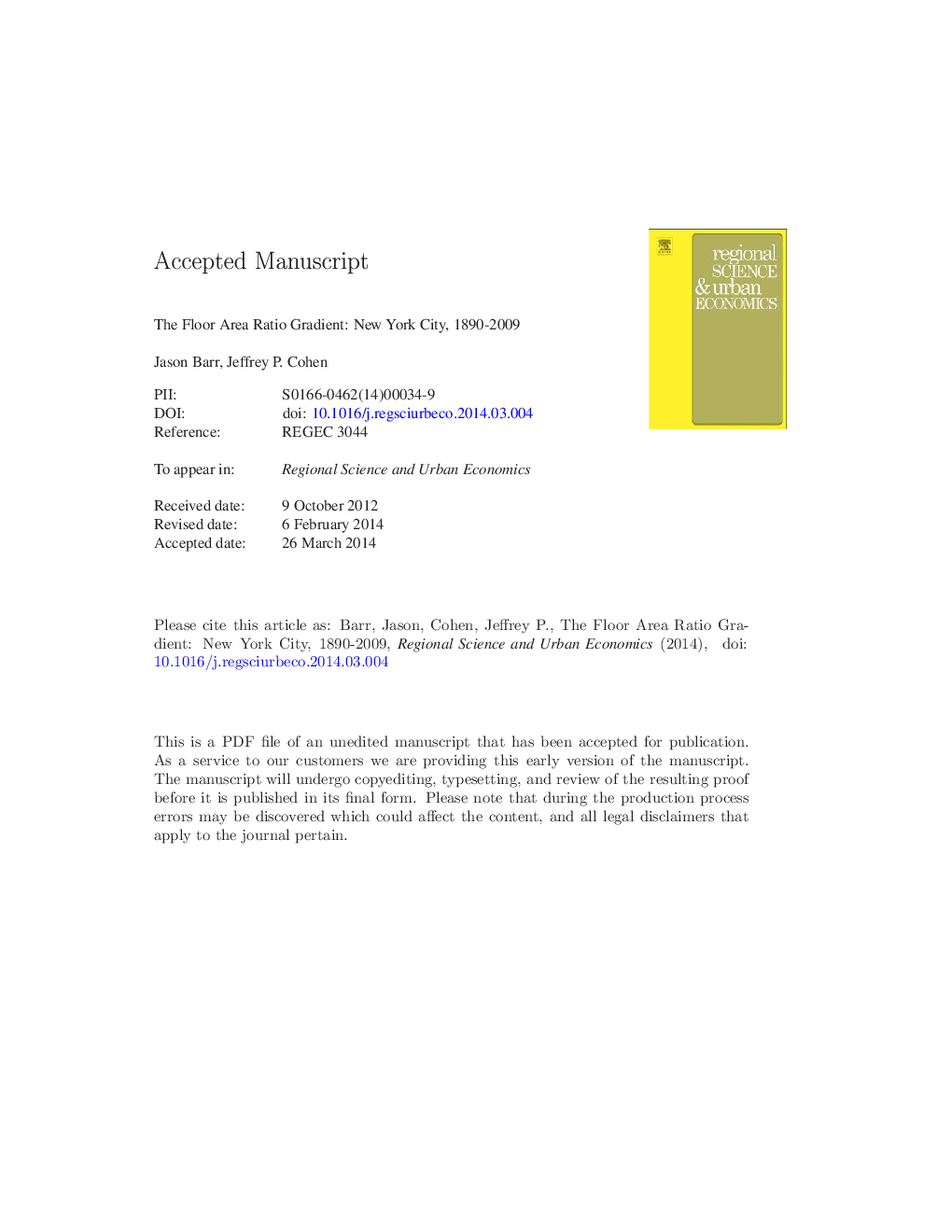| Article ID | Journal | Published Year | Pages | File Type |
|---|---|---|---|---|
| 7383939 | Regional Science and Urban Economics | 2014 | 30 Pages |
Abstract
An important measure of the capital-land ratio in urban areas is the Floor Area Ratio (FAR), which gives a building's total floor area divided by the plot size. Variations in the FAR across cities remain an understudied measure of urban spatial structure. We examine how the FAR varies across the five boroughs of New York City. In particular, we focus on the FAR gradient over the 20th century. First we find that the gradient became steeper in the early part of the 20th century, but then flattened in the 1930s, and has remained relatively constant since the mid-1940s. Next we identify the slope of the gradient across space, using the Empire State Building as our core location. We find significant variation of the slope coefficients, using both ordinary least squares and geographically weighted regressions. We then identify subcenters, and show that while accounting for them can better capture New York's spatial structure, by and large, the city remains monocentric with respect to its FAR. Lastly, we find a nonlinear relationship between plot sizes and the FAR across the city.
Related Topics
Social Sciences and Humanities
Economics, Econometrics and Finance
Economics and Econometrics
Authors
Jason Barr, Jeffrey P. Cohen,
